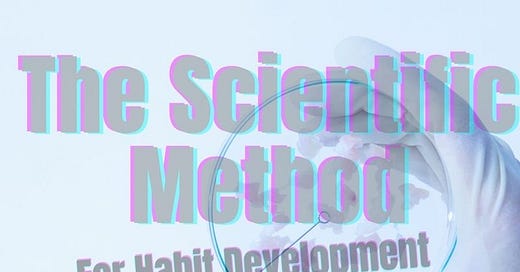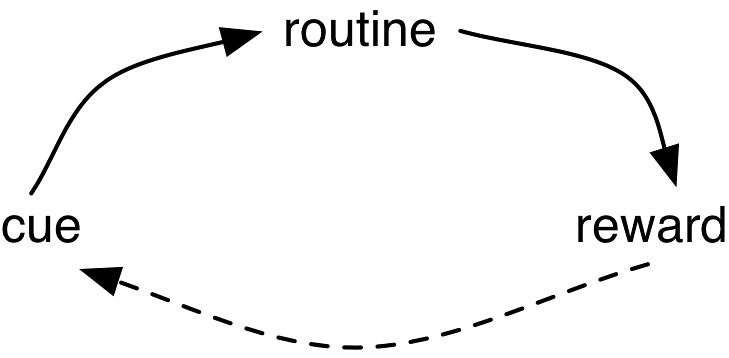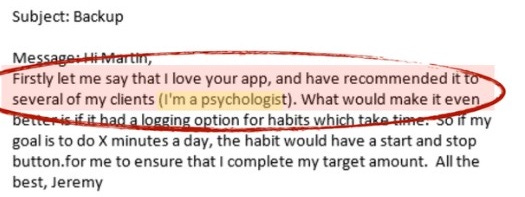This Habits 2 Goals episode is FREE for ALL subscribers
Don’t Die with Your Music Still In You. » Opens the 15th of each month.
Fifteen years later, things are starting to feel a little uncomfortable.
The scientific method— common sense codified— is used for everything under the sun:
Marketing? A/B tested.
Ads? Split tested.
Vaccines. Test Immune Response.
Water Purification.
Pasteurization
Fertilizer. Identify Kill Bacteria
Space travel? Rocket science.
The scientific method dates back to the 16th and 17th centuries, with brilliant thinkers like Sir Francis Bacon and Isaac Newton laying the groundwork.
It’s shaped our world ever since.
Yet when it comes to habit development—the stuff that changes lives...
Where is the scientific method in habit development?
Awkwardly, it seems behavioral science keeps directing us to the habit loop.
Again. And again.
Cue → Routine → Reward.
If you’re a rodent, a deer, or a cow, the habit loop is terrific. 🐁 🐄 🦌
If you’re a human—with choice, intention, and self-reflection?
What exactly is the habit loop doing for you?
Where’s the plan? The data collection? The analysis?
Where’s the mechanism to strengthen the habit’s automaticity over time?
Anyone? Bueller?
That’s the awkward part.
The Scientific Method: Step by Step
Observation – Identify a problem or ask a question.
Hypothesis – Predict a possible explanation or outcome.
Experiment – Design and perform a test to gather evidence.
Data Collection – Measure and record results.
Analysis – Evaluate the data to see what it reveals.
Conclusion / Reassessment – Confirm, revise, or reject the hypothesis and iterate.
Say it with me:
Behavior change requires behavior change.
I’m sure that sounds obvious or perhaps even stupid.
And, it’s true.
It’s a core truth you won’t find in the habit loop.
Enter: P.A.R.R.: Plan. Act. Record. Reassess.
PARR is the scientific method for behavior change.
Here’s how it works—and, dare I say, perfectly aligns with the scientific method.
🔬 P.A.R.R. Is The Scientific Method For Habit Development
1. PLAN = Hypothesis
You choose a behavior and create a habit plan. You can even (optionally) align the habit to your goal.
Choose the habit you’d like to develop and track. “Writing” for instance.
Identify the Minimum Success Criteria (MSC) — e.g., "2 pages" or "20 minutes"
Select the Target Days — M/W/F or Tu/Th/Sat. Here you use the rhythm of the week by selecting “Target Days”.
This becomes your hypothesis: If I do X, Y will improve and i’ll ultimately achieve Z (goal- writing a book).
2. ACT = Experiment
You act according to the plan. Here’s the great news, even if you miss a “Target Day” you’re now gathering data AND you can make it up on a Non-Target Day.
3. RECORD = Track! Data Collection
Each day, mark a “1” if you did it—met your MSC, a “0” if not.
Important: Add comments—what worked, what didn’t.
4. REASSESS = Analysis + Adjustment
After 4 weeks, review your results.
If you’re 85% or better (actuals vs targets) you raise the bar—increase your MSC or Target Days.
That’s how you cultivate habit strength over time—by design and successive 28-Day habit tracking periods.
That’s how you cultivate automaticity—on purpose.
Habit tracking is a great start—but if your tracker doesn’t build habit strength using a method like P.A.R.R., you’re just checking boxes.
P.A.R.R. isn’t a loop. It’s a ladder.
Where’s behavioral science on this?
Still mostly silent.
Often calling habit tracking ineffective—or worse, unnecessary.
Oops.
The good news?
A few semi-recent publications have started highlighting the influence of intention on habit cultivation. Example—» (2020, revisiting the habit-intention hypothesis)
One more time: The Habit Factor® (app) launched in 2009!
Published the first habits-to-goals methodology
Produced the P.A.R.R. methodology—a method that accounts for the intentional cultivation of habit strength and automaticity.
P.A.R.R.: A method for humans.
Not a loop for animals.
It’s not theory. It’s the scientific method proven time and again—designed to build real habits and lasting behavior change.
PRACTICAL. BEHAVIOR. CHANGE.
Sincerely,
The Habit Factor®
The final twist: Habits do NOT live in a vacuum.
They exist within a larger SYSTEM—YOUR Behavior Echo-System™.
Let’s be clear—very CLEAR:
Habits are not systems. And systems are not habits.
Confusing the two muddles the mechanics of behavior change.
There’s an unnamed author who keeps insisting that habits are systems. They’re not.
When it comes to your behavior, habits operate within a larger Behavior OS—an echo-system (not ecosystem—ECHO as in reverberation).
It (behavior) is shaped by two powerful forces: your environment and your thinking—the stories you tell yourself.
This is why the other two books exist. 👇
This is why the Behavior Echo-System™—a pioneering model in its category—serves not only as a diagnostic tool but also as a prescriptive guide for fostering goal-directed behavior.
Keep on trackin’ ✅
~mg
📄 Grab the free habit tracking template: thehabitfactor.com/templates
Don’t Die with Your Music Still In You. » LAST CALL!
The Trilogy:
The Habit Factor®: Daily wins for long-term goal momentum.
The Pressure Paradox™: Productivity, Performance & Peace of Mind.
EVERYTHING: The stories you tell yourself heavily influence your behavior.
»You make H2G better and stronger!
If you’re enjoying H2G, share and/or like— that simple act helps! 👊🏼 🙏🏼
Ready to level up? Click here to upgrade.
**What's your time worth? : Learn More Here! **
GOOD HABITS HAPPEN WHEN PLANNED;
BAD HABITS HAPPEN ON THEIR OWN.
🙌 That’s right! You can get The Habit Factor® FREE with your audible trial! https://audibletrial.com/habits2goals
New listeners, grab your free habits 2 goals tracking template here: https://thehabitfactor.com/templates
Podcast → Subscribe iTunes, Android
*Awarded: “Finalist: Self-help, Motivation”* International Book Awards: EVERYTHING is a F*cking STORY.
To learn more about P.A.R.R., just Google “P.A.R.R. and The Habit Factor.”
















Share this post